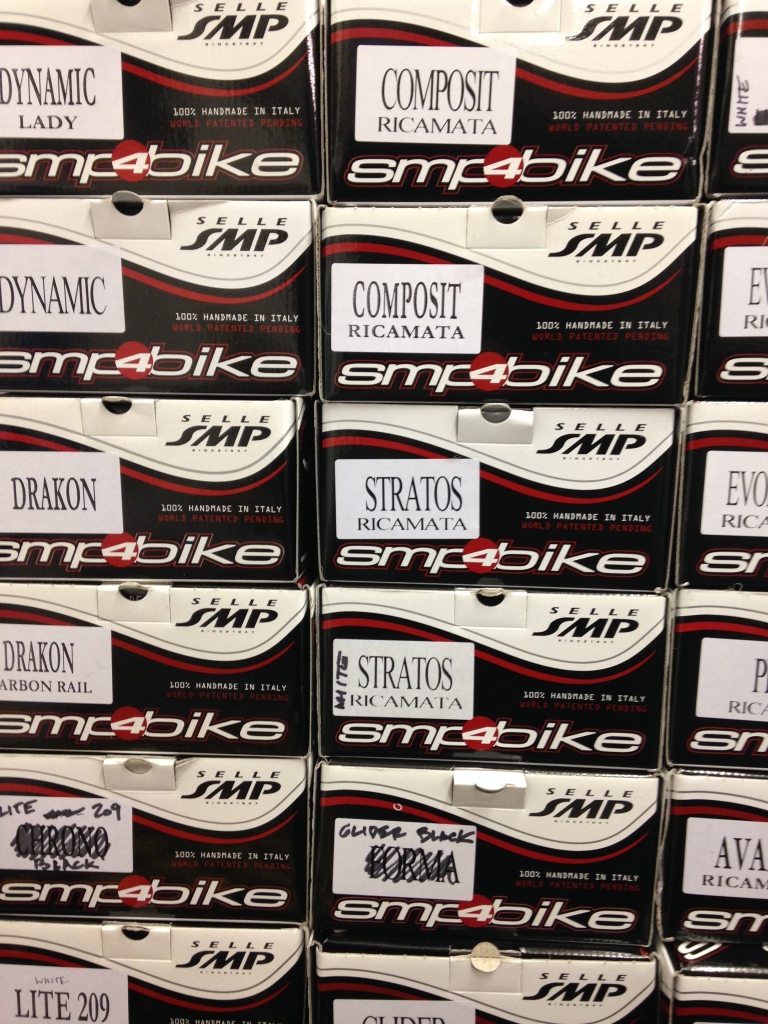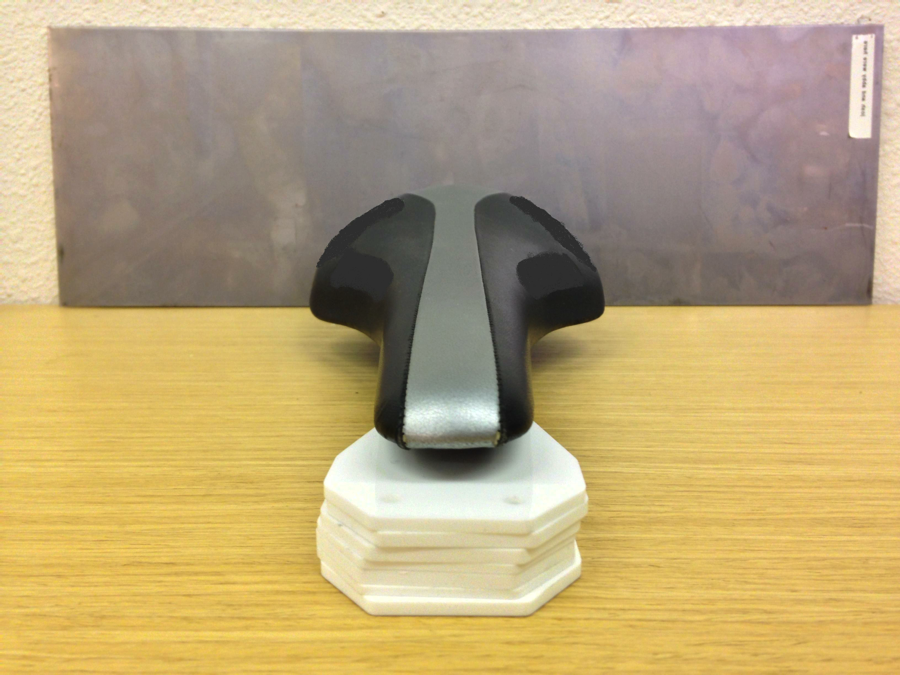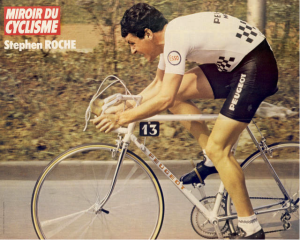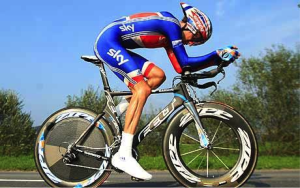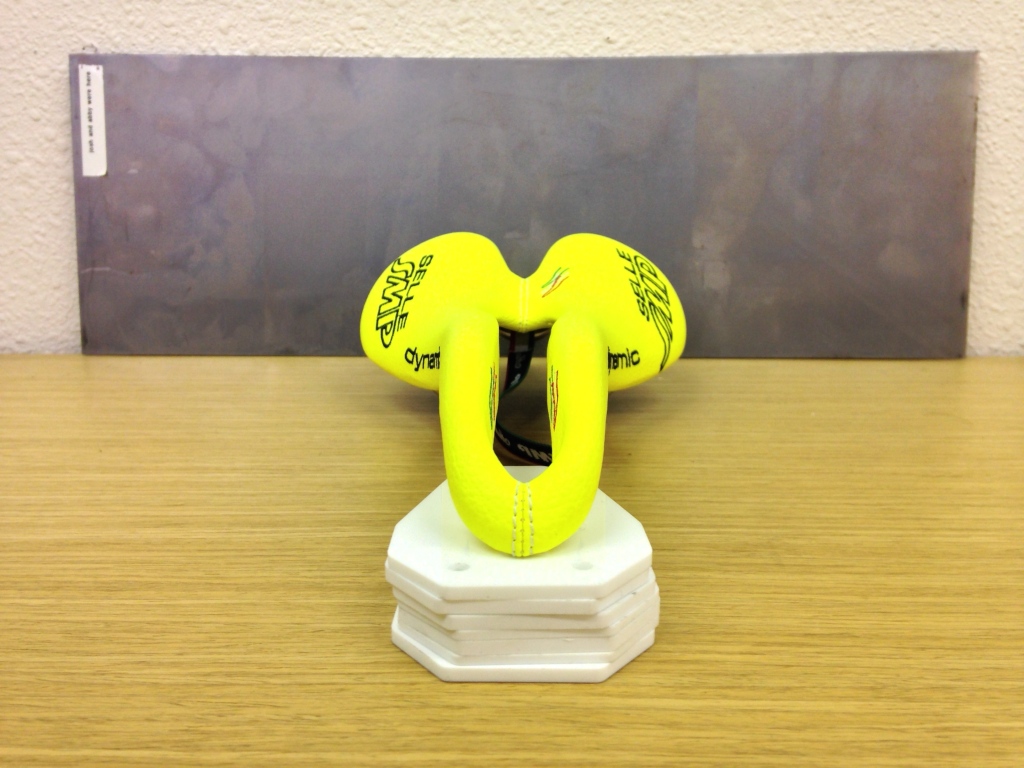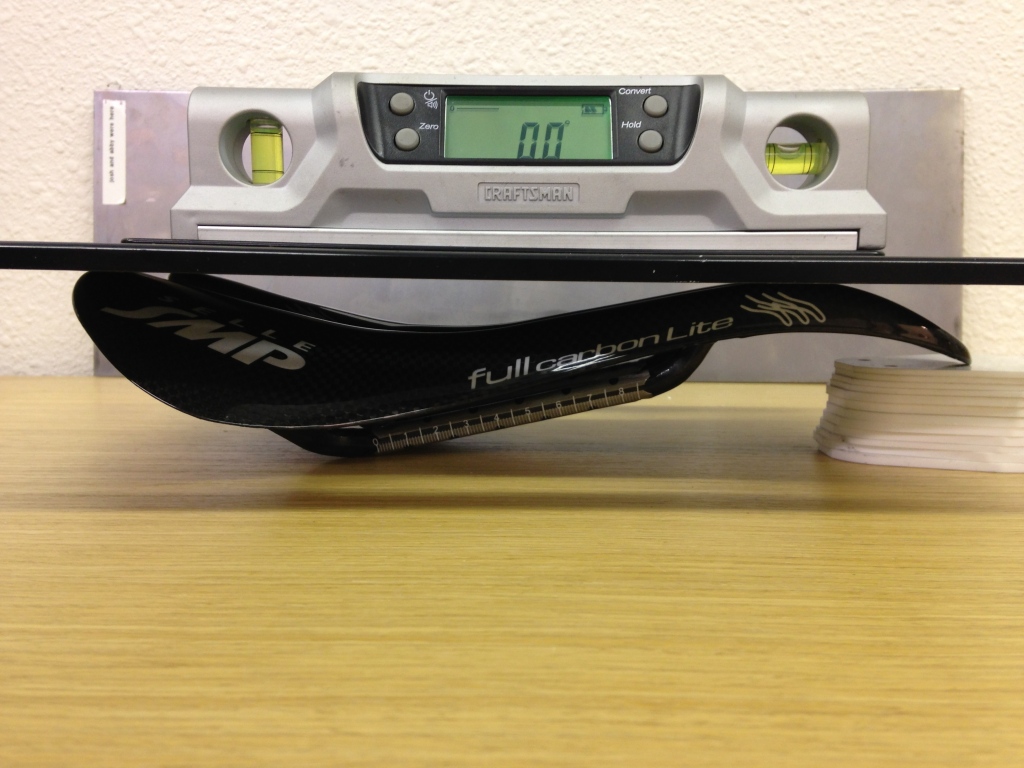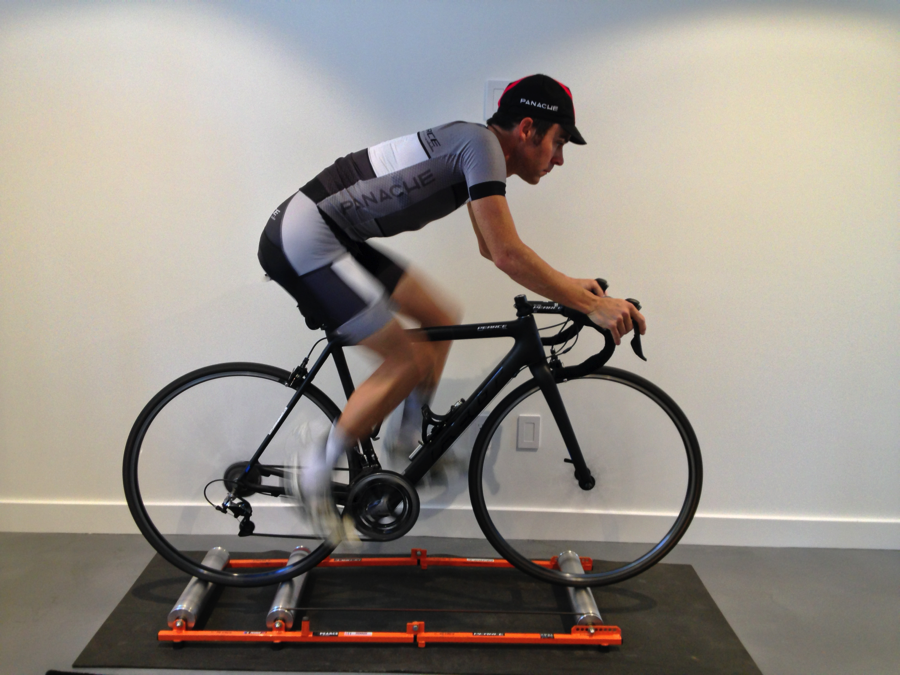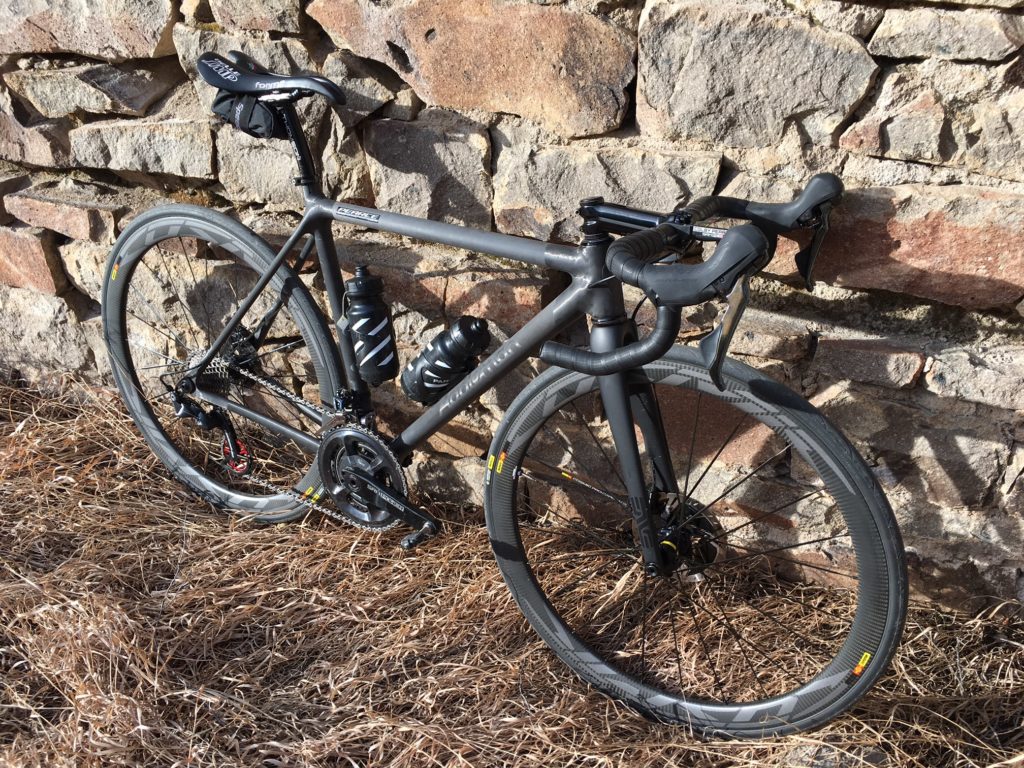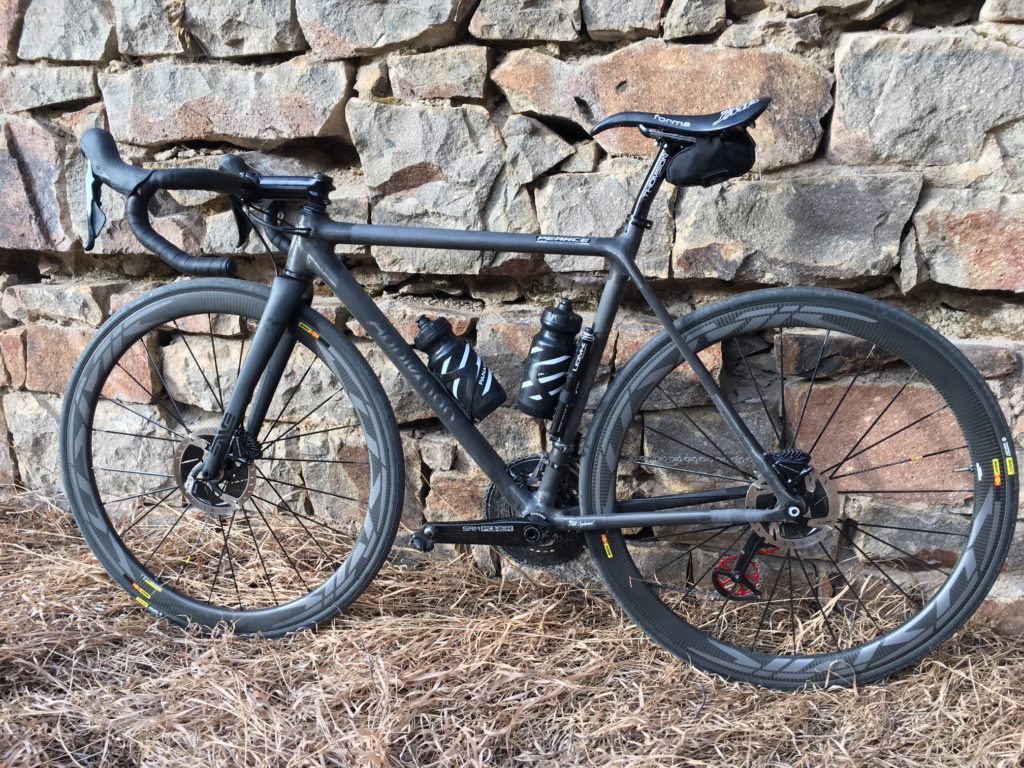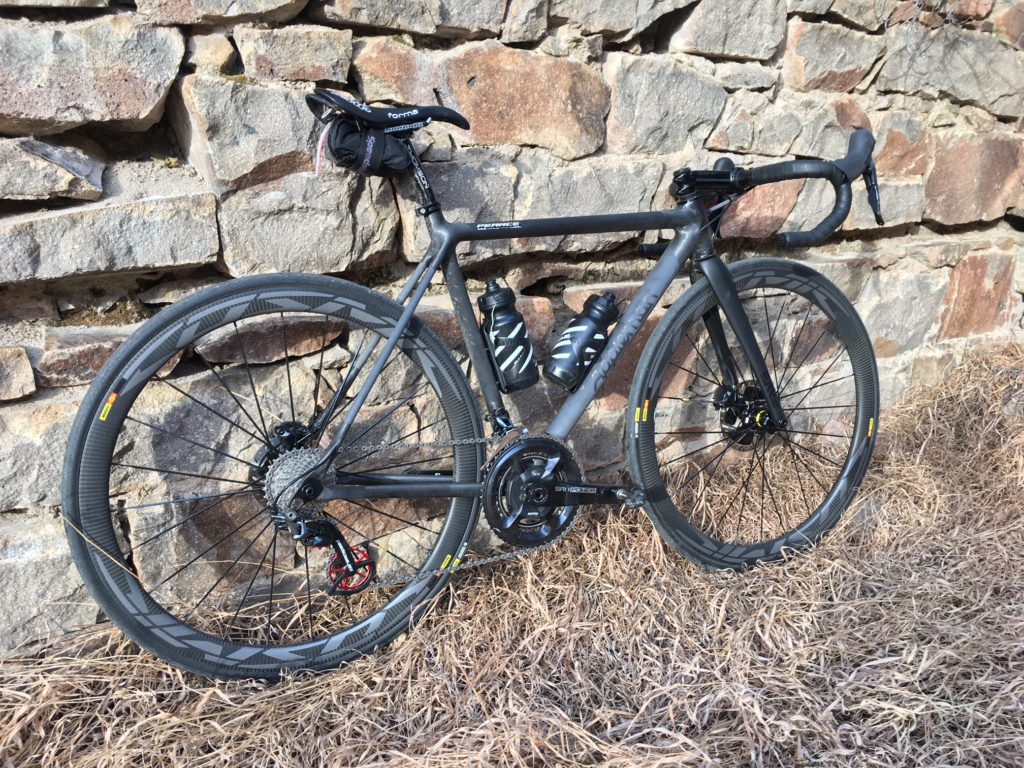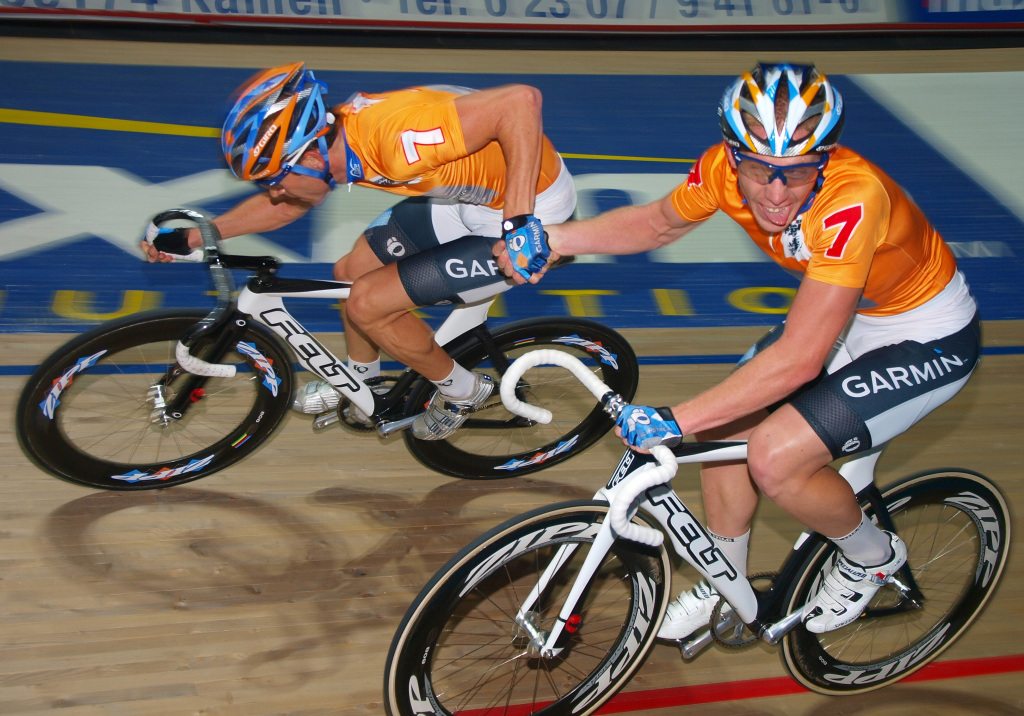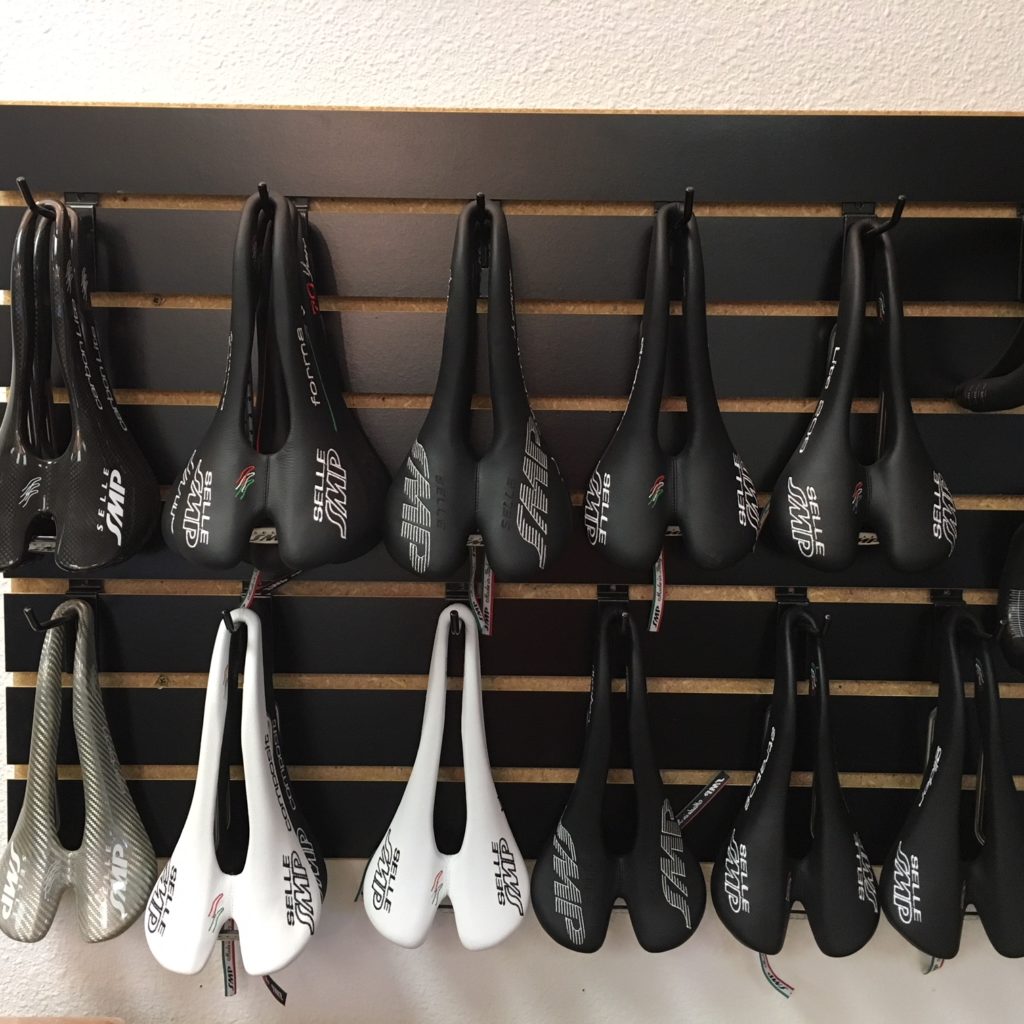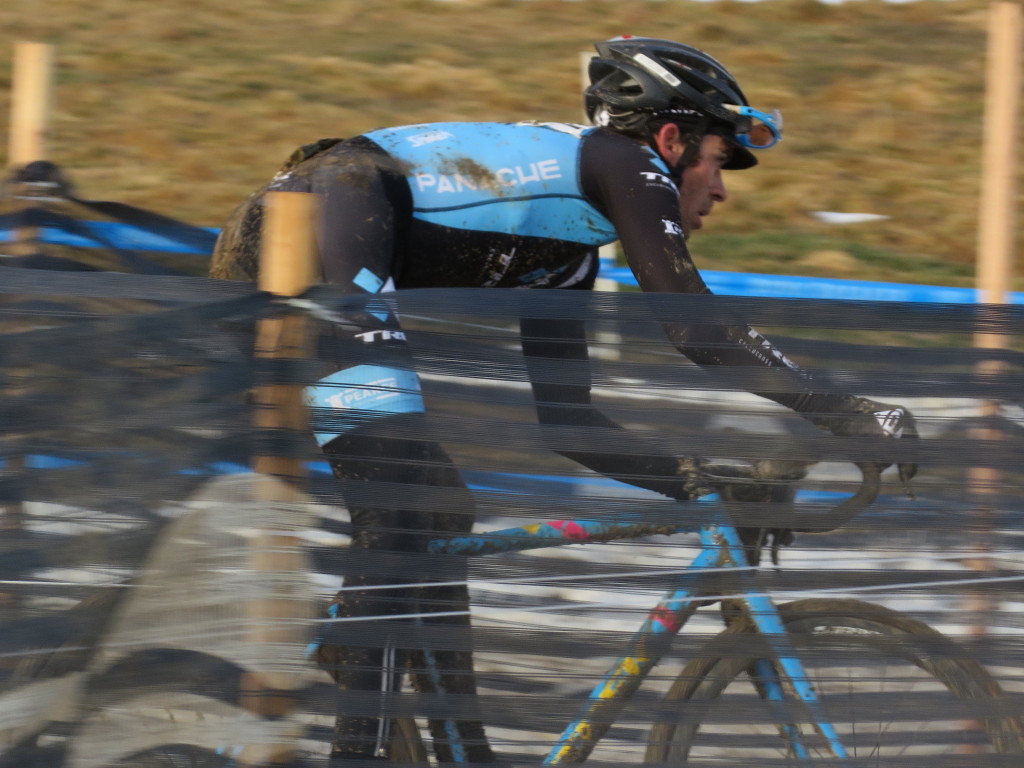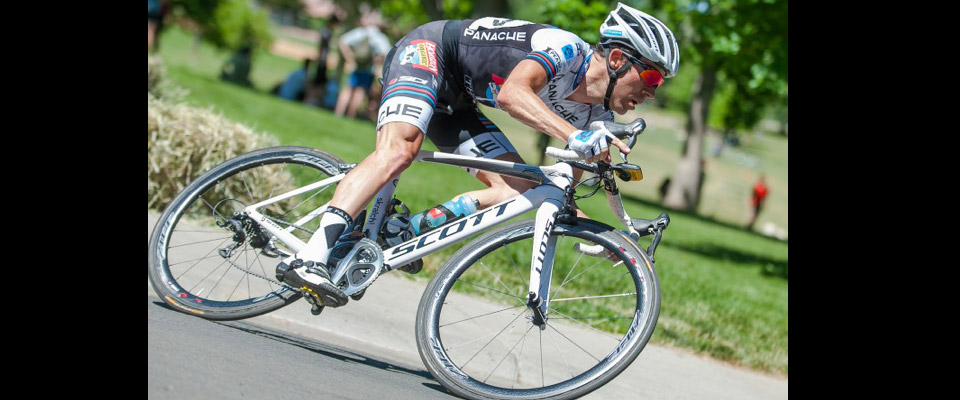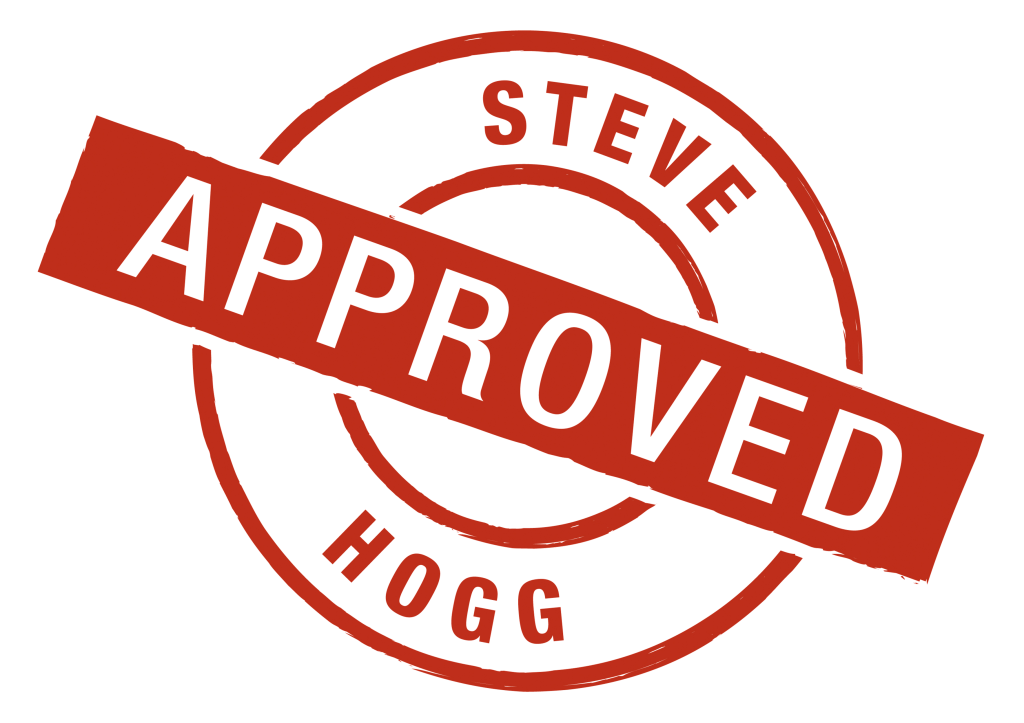There are several strongly held misconceptions about bike fitting. In the name of slaying sacred cows, let us proceed.
Biomechanics are Everything
This belief holds that everything is fixed by changing things on the bike. If an athlete’s lower back hurts, it can be “fixed” by changing saddle brand, saddle height, saddle fore-aft, insoles, cleat wedges or footbeds. Or maybe crank length. If a rider’s knee hurts, we consult the same list of variables. If this list does not solve the problem, we are not sure what to do.
If the fitter is trained in physical therapy, they may prescribe off the bike exercises that will help correct or optimize a rider’s movement patterns on the bike.
Sometimes this method will help a rider, but not always. Sometimes a rider will experience temporary relief only to have symptoms return. In some cases, a corrective exercise program will not be enough to restore health to a rider.
It is far more common for injuries and chronic pain to be driven by movement patterns which are a function of the rider’s inherent ability to generate force than it is from the bike. How the athlete relates to the bike can magnify these patterns. Bicycles are devices that inherently “spin up” human asymmetries and spiral patterns, in a way that causes dysfunction and challenge. All endurance sports are generators of Pattern Overload, which simply means that muscle length-tension relationships and fascial regions become imbalanced, which eventually causes challenge [read: pain]. Of all the endurance sports that involve repetitive movement patterns [most do], cycling is arguably the best at causing Pattern Overload.
For an excellent article that explains this concept further, read here.
Chronic pain is the way the nervous system tells us that what we are doing isn’t working.
Every once in a while an injury is caused by a twisted saddle or a misaligned cleat, but this is one or two out of a hundred cases. The rest are a split percentage of responsibility between the set up of the bike and the function of the athlete. The job of the fitter is to discern which is which, how much overlap there is, and what to do about it.
The function of the athlete means the total expression of movement as an end result of everything you are: your anthropometrics, phenotype, belief systems, injury history, life experience, lifestyle choices, and cycling dream, goal or objective. Only in consideration of these factors as part of total physiological load is it possible to discern the true root or mother of a problem or challenge.
The important part to understand about this paradigm is the reversal of the order of operations. The common belief is that biomechanics drive the outcome [of pain, discomfort or alternatively flow state or effortless effort] while in fact, the intent of the athlete drives the biomechanics. This is natural law, all athletes [and humans] are ultimately simply expressions of their natural energy and drive [or what might be called the soul].
Another way to say this is: who you are dictates how you express everything you do. This statement might seen trite but it is actually quite deep.
Of course if an athlete who is fully aligned with their intent would have trouble producing their optimal 40KM time trial performance on a tricycle, so the biomechanical relationship of rider and bike is non-trivial. That said, the true expression of optimal movement must account for the whole athlete. As examples, we can consider Panjabi’s model, Paul Chek’s Totem Pole, as well as the Bio-Pscyho-Social model in our examination. For a bit more on this topic, see my article on Integrative Bicycle Fitting.
The synopsis of my point is that we have to look beyond the biomechanical model in many instances to truly resolve the challenges a client has with their fit.
One and Done
Riders are commonly under the belief that once their fit is dialed, they are done forever and can simply replicate these choices moving forward for all future bicycles. Equipment choices such as saddle brand and model, shoe size and width, and perhaps handlebars have been selected and optimized, and will remain so forever. Dimensions such as frame size, stem length, and saddle height are “set” and do not change. These beliefs are incorrect.
Why? The human body is always responding to total physiological load. This means as riding volume or intensity changes, off the bike movement practice evolves, life stress changes, work stress fluctuates, aging occurs, dietary philosophies are adopted or abandoned, you walk more or less, decide to take yoga classes over the winter…your muscles, fascial relationships, and movement patterns also change. This means your relationship to your equipment changes. Shoes that you use for five seasons in a certain brand and size are no longer rideable, they hurt your feet. A saddle you used for three seasons without noticing it becomes a bed of nails. The saddle height you rode since you were 18 is now too high, or the stem seems just a bit too long / a bit too short. These are just common examples.
Bicycle fitting is a process, not an outcome.
In reality, bicycle fit is an ongoing process, as the human body is always changing and adapting to the total physiological stress experienced by the organism. Thus, our relationship to our equipment changes. One of the thing that makes cycling a unique sport is the intimate relationship we have with our equipment; a runner simply does not have the same level of engagement with their kit that we do. Part of the practice of cycling is having an understanding of that relationship and managing it according to the evolution of our practice.
This might mean a seasonal check in with fit is ideal, or a rider may need to have a fit tune up with greater frequency. For most athletes who ride a lot but move in balance and are injury free, an annual rhythm is optimal in my experience.
Bicycle fitting as a process also means that some aspects of bicycle fit are relatively set in stone, while others are in fact trial and error. This is true regardless of the experience, knowledge or training of the bike fitter.
Why? Some aspects of fit are best sorted out on the road or trail. For example, you can’t figure out how the handling of your bike has changed while it is locked in a trainer in a studio. Some changes, such as saddle to bar drop, may be placed within a certain window. Where specifically the bars end up in that window depends on the rider’s experience over time, with an allowance for adaptation, which can happen over weeks or perhaps months. Decision parameters may include handing on steep descents, lower back discomfort on climbing days, or tightness in the anterior aspect of the hips. After an adequate adaptation period it may be necessary for the fitter to see how the rider’s posture has adapted to the changes made; these changes may or may not be favorable. From this point, a decision can be made.
Perfect Fit for Me
Similar but importantly distinct from the One and Done misconception, the Perfect Fit for Me is the idea that there is one of everything that is perfect for you, and that bike fitting is a quest to find this perfect solution.
Hypothetical example: in the past a an athlete has ridden a bike with a saddle height between 718 and 726mm. At times 718mm was ideal but at other times it seems too low or there is uncertainty about what is “right”. There are confounding variables: sometimes a higher saddle feels better [more power?], but lower back pain results on long rides. The belief: there is one saddle height in the universe of all possibilities that is perfect and optimal, and will lead to the ideal expression of power or VO2 max.
If you buy into the idea that anyone with a lot more education than you are is a guru, then you believe that finding these solutions is simply a function of hiring the fitter with the most experience or letters after their name, and this person will tell you what your optimal, perfect and forever saddle height is.
This idea is incorrect. The concept that there is one perfect saddle height [or any other dimension to a bicycle] that is the illusive perfect solution for a rider is an expression of perfectionism that has no foothold in reality. A best performance or highest expression of speed on a bicycle over a given duration is not a function of finding perfect fit dimensions and then honing to them; it is of honing the rider to relate to the machine in a way that allows expression of this potential. To do this, the ride must be trained to be very rigid and direct, like wood, and also to be flexible and durable, like water.
Even on a precisely manufactured machine such as a modern bicycle, nature will find a way to express the relationship of rider and steed as perfectly imperfect.
Generally, the more often a rider has niggles or minor injuries as a result of equipment changes, the more they need a movement practice that will bring about more durability and less fragility. This practice will by definition offset and compliment the movement patterns found in cycling.
While the fitter [ostensibly] has the expertise and knowledge to make certain decisions and guide fitting choices, and this is invaluable to the success of the fit work, there is one area that no amount of education or experience can ever surpass.
The expertise the client has of inhabiting their own body is indisputable. The authority the client has in this domain is indisputable.
This is to say that the fitter can never tell the client what feels good or bad, what saddle will work or what saddle to bar drop feels right. Only the client can determine this.
The fitter is an interpreter of information, sensation and feedback from the client. The art and experience help a fitter interpolate this information and use it in a constructive way to improve the relationship of the client to the bicycle.
At times, the client may misunderstand their sensations and a tinkering client may find themselves way off the mark of optimal fit as a result of these. Self practiced bike fit is a train that is ripe with opportunity to get off track. In this case, the task of the fitter is to bring the client back to center.
This may mean asking a client to tolerate a type of discomfort in the short term to weather the storm of adaptation; it may also mean asking a client to immerse themselves in functional work to restore movement patterns.
Bike Fitters are Wizards and Know Everything
This belief is that the fitter is the grand wizard and can solve all problems with his wrench and goniometer. This is incorrect.
While there are some aspects of bike fitting that are firm recommendations, as stated above, much of it is trial and error, even for an experienced fitter. Why? Because of the fractally complex individuality of the human being.
There is only one rule in bike fitting: There Are No Rules in Bike Fitting.
This is another way to say that Bio-individuality Rules Everything. One person’s perfect saddle of fluffy heaven is to another person a pile of screwdrivers. This is true for every choice in fitting and while there is some equipment that can work for many people, this is not because people are similar or the same; humans are in fact far more different than we tend to think [one of my favorite examples can be read here]. It is because humans are really adaptable, and because some pieces of equipment are quite well designed [while many are total crap].
Time trial bikes are a great example of this concept as well. Often riders come to a fit hoping to optimize aerodynamics. While a fitter can speculate, and a good filter can likely get close, there is no way a bike fitter can optimize the aerodynamics of a rider without testing their CdA before and after changes, and accommodating adaptation to those changes as well [something a wind tunnel cannot do in one session either]. Riders need to have realistic expectations as to what a fitter can accomplish, based on the resources they have.
In truth, the same can be said of a rider who wants a fitter to optimize their performance. Most riders will conceptualize improvement in the best power they can average over a 20 minute maximal effort. This is only one of hundreds of ways to quantify performance on a bicycle but because it is orthodox and relatively easy to measure, riders and coaches have agreed it is a critical benchmark, in spite of the fact that very few races have these precise demands. Because there are so many ways improved fit could help a rider be faster [better cornering, better efficiency, improved comfort, to name only a few] quantifying how a fit influences performance is quite challenging.
The true litmus test of the long term success of any fitting journey is the steady improvement of the performance of a rider, enduring comfort, and minimal or zero injuries. Injuries in this case is both referring to acute joint or muscular problems as well as lingering aches, soreness, or recurrent pains that limit performance on long hard days.
All Suffering is Good
Endurance sports, cycling in particular, glorifies suffering. We pedestalize the idea that one rider can suffer to win the “road race of death and destruction” above all others. This tired old belief system persists today, in spite of years of misguided training and misconceptions about equipment as a result.
Every human, even the toughest bastards, have a limited capacity for suffering. When we put all suffering in the same box, we do not distinguish between sore legs from riding 160KM and numb genitals from a poor saddle choice. We do not distinguish between burning lungs from intervals and sore feet from shoes that are 1.5 sizes too small. This is incorrect.
By choosing equipment that allows us to focus on the task at hand, we protect our bodies, we protect our health, and we allow expression of our highest potential. It is time to stop confounding being tough with tolerating all pain and discomfort as a good thing. Toughness is separate from poor bike fit or equipment choice.
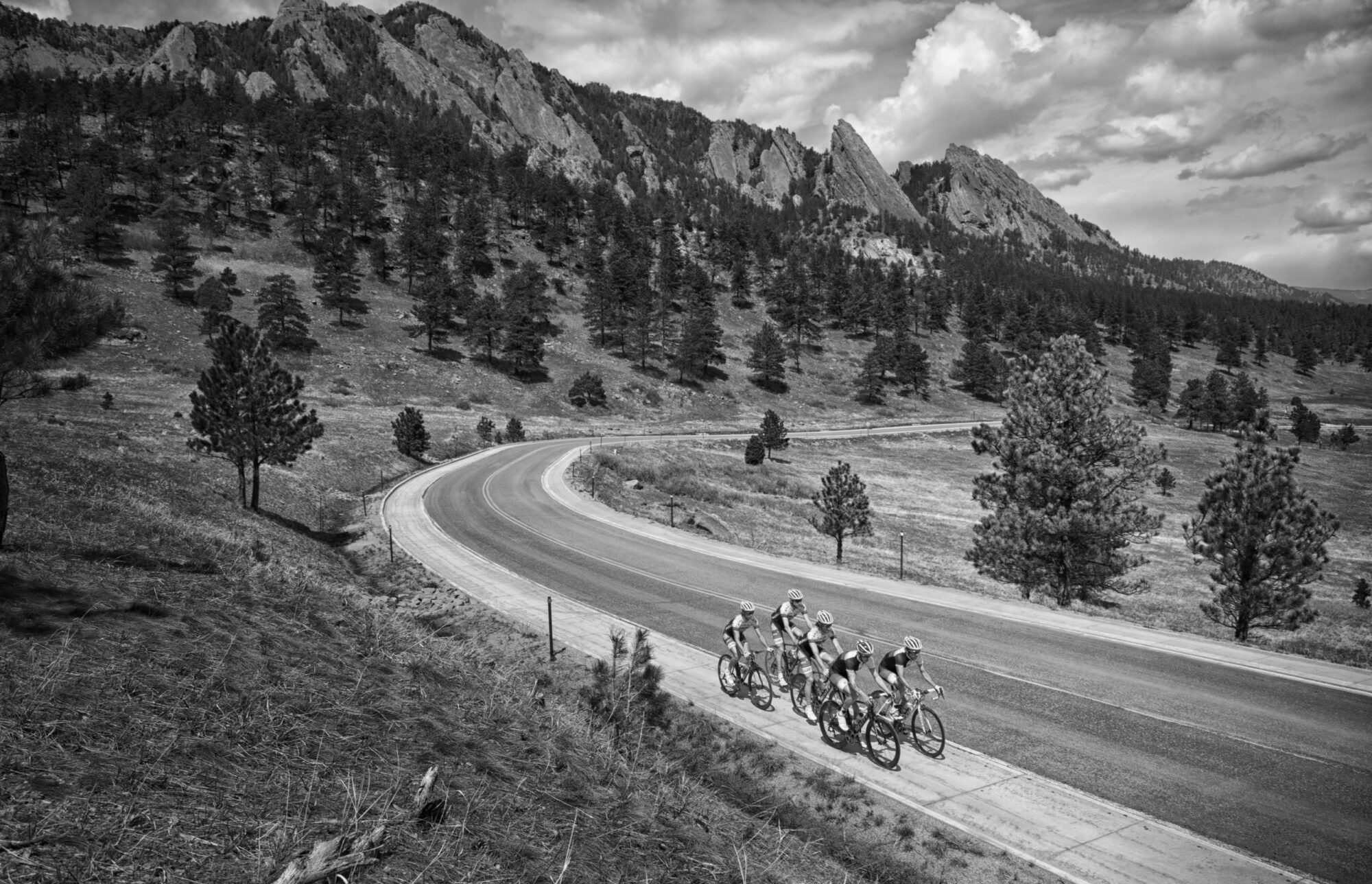
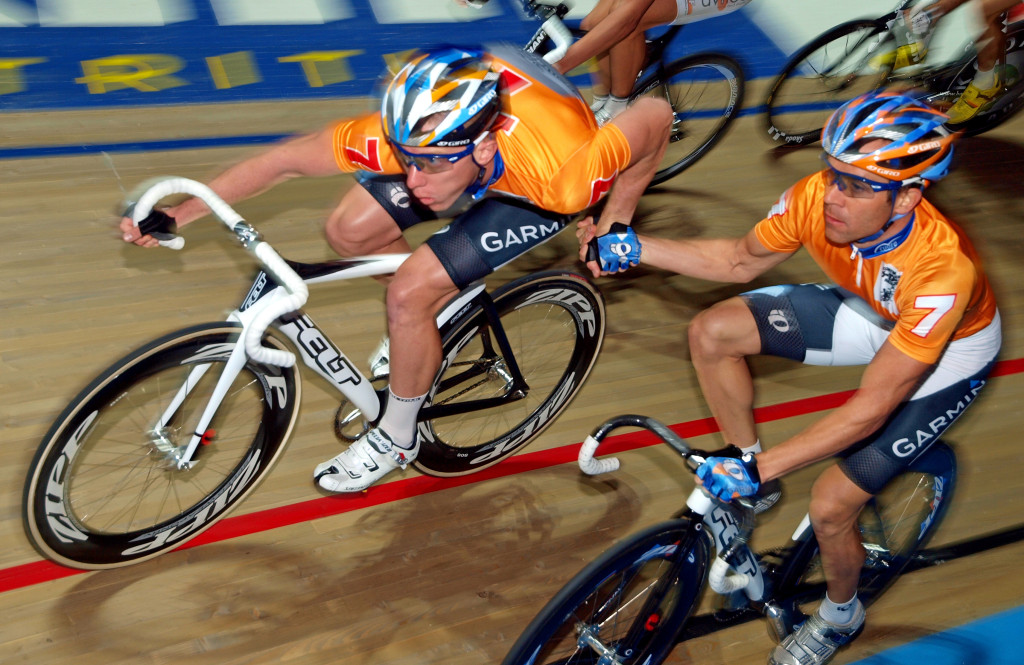
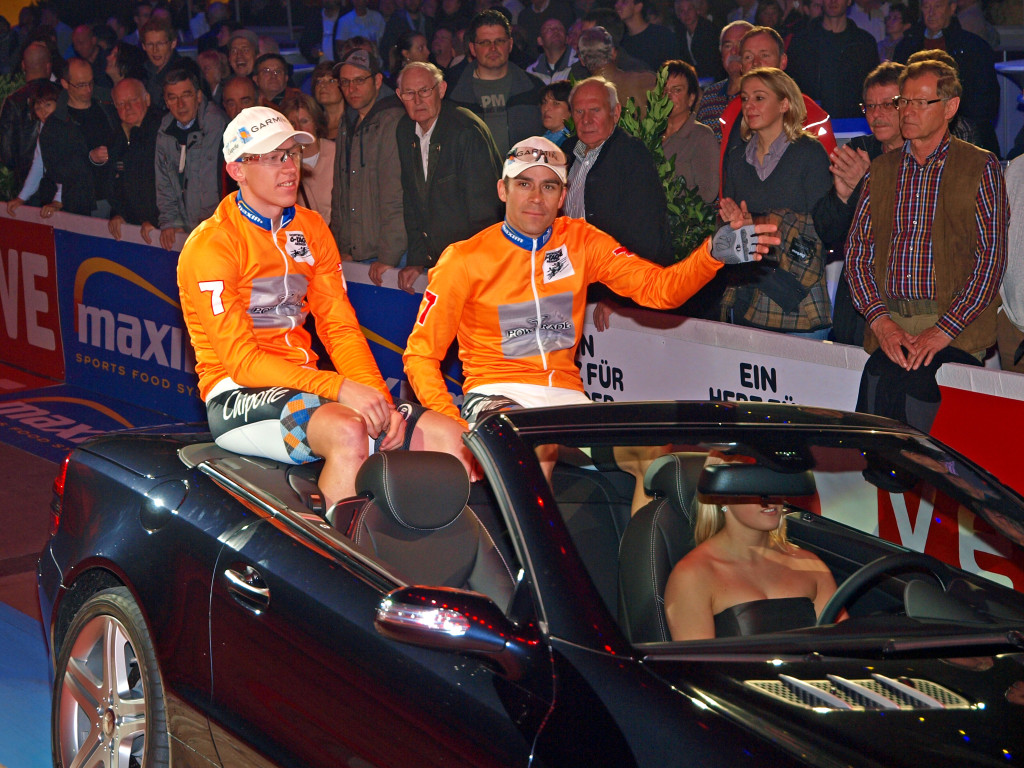
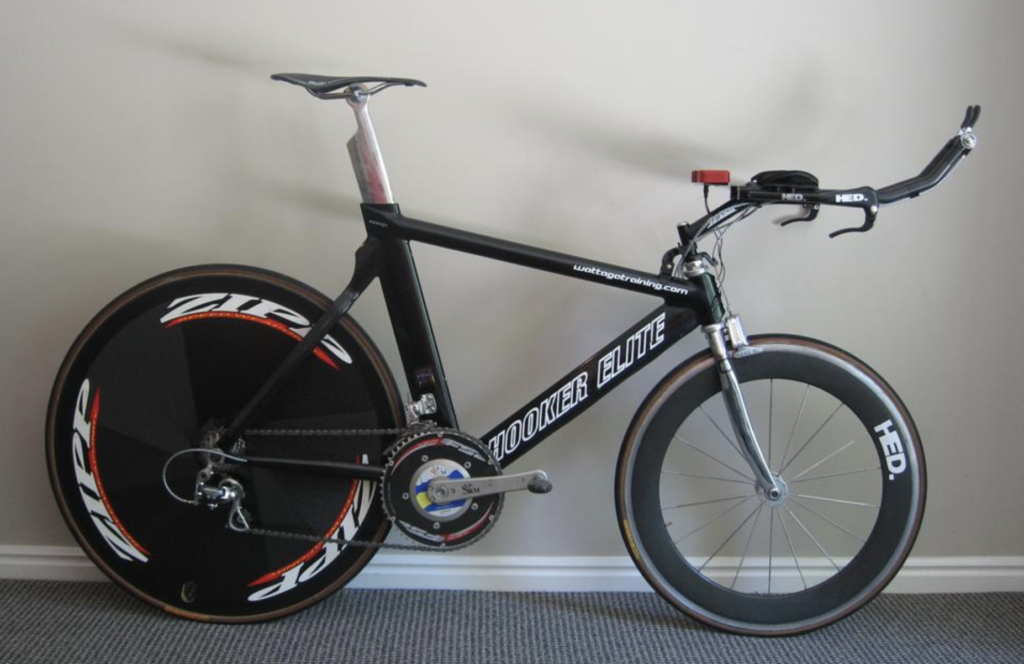
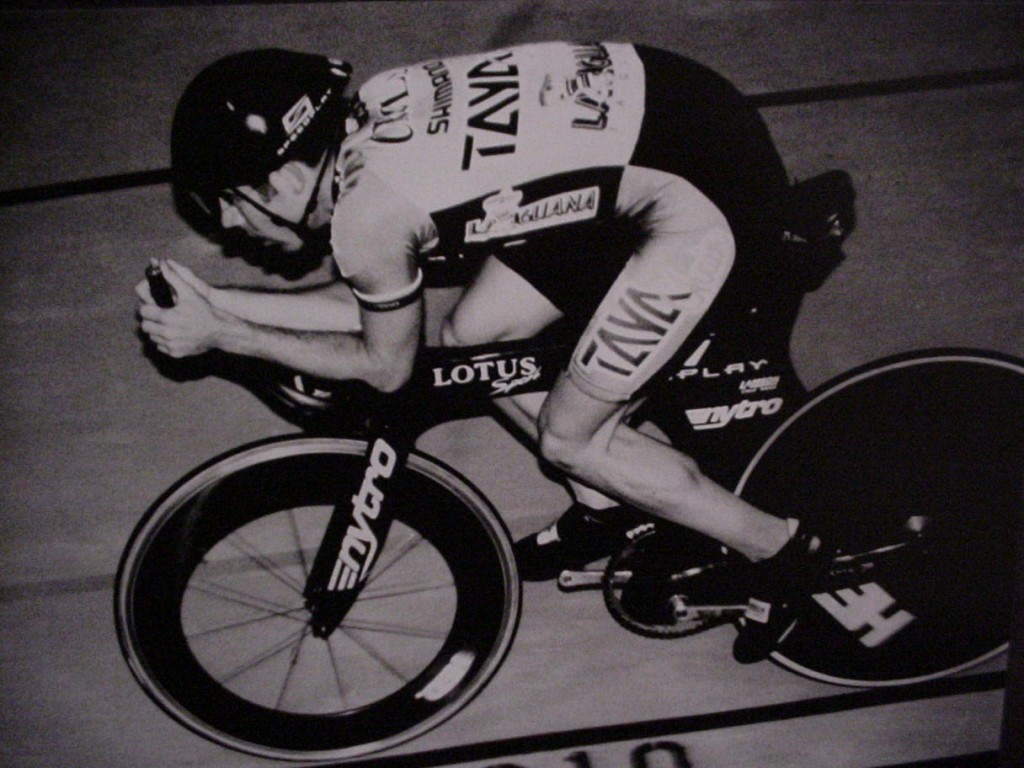
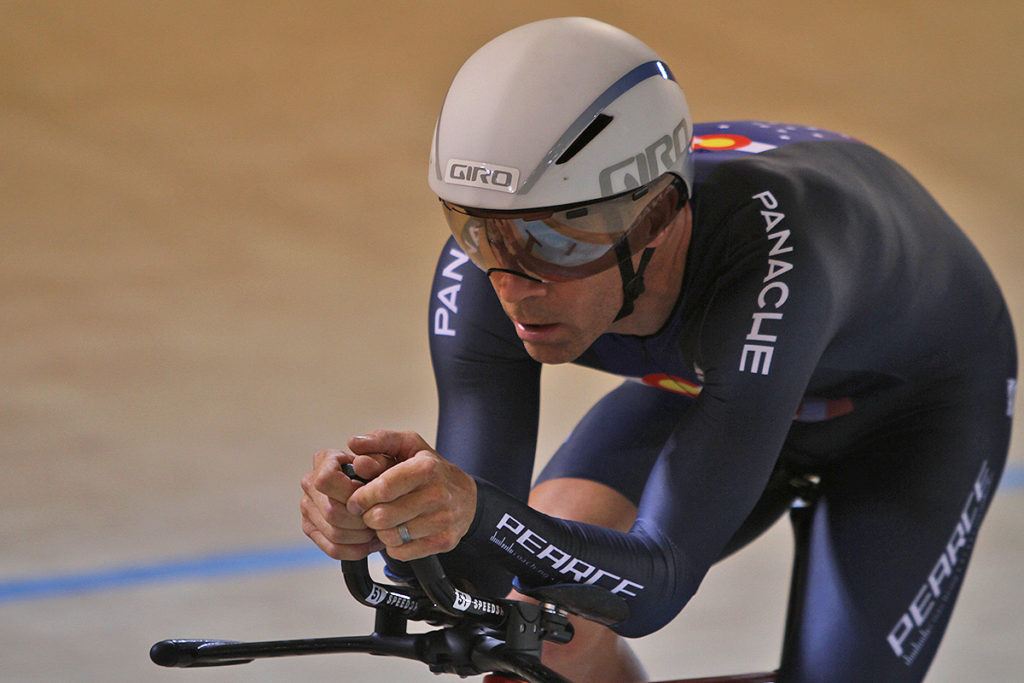
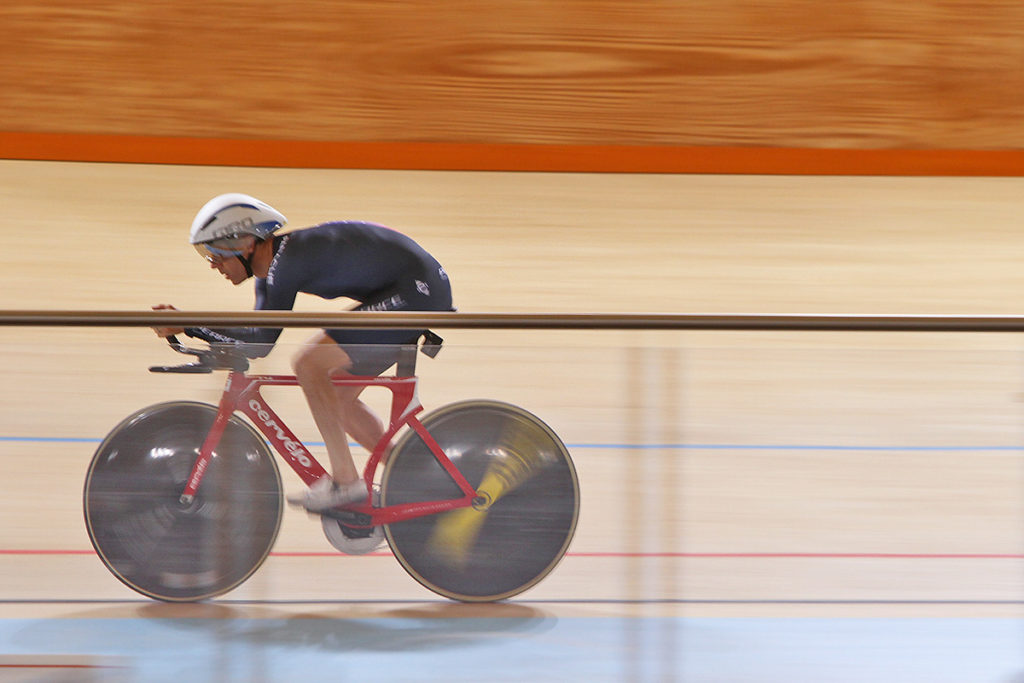
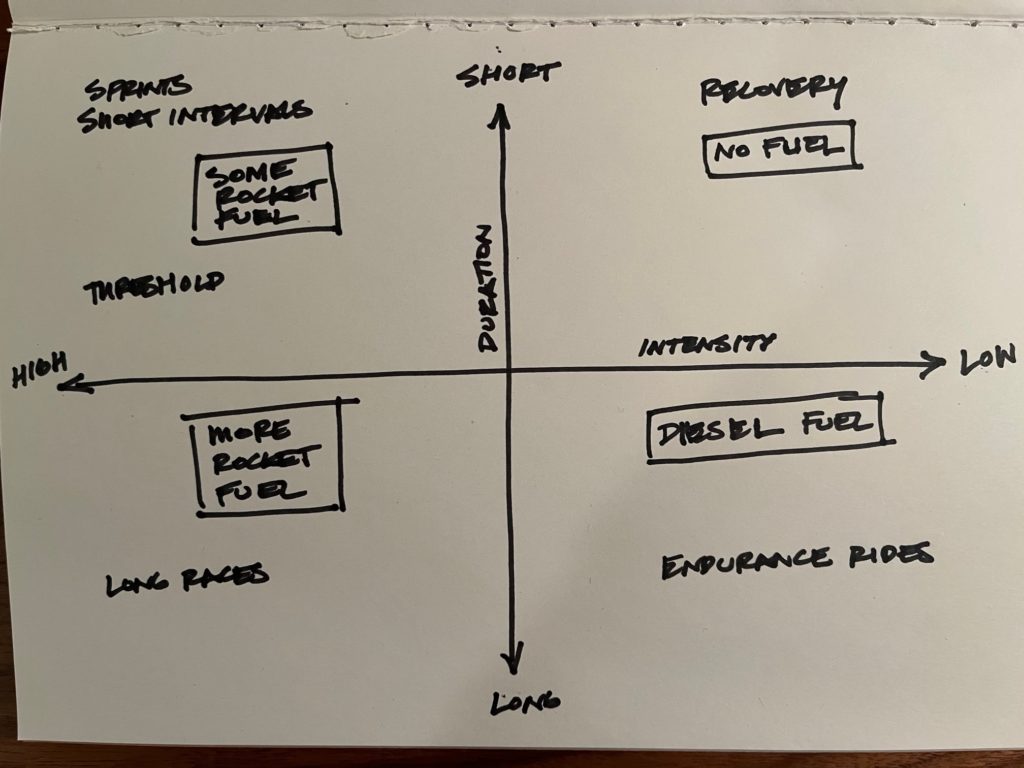

 Changing saddles can be a daunting undertaking for any cyclist. Riders frequently use the same saddle for years simply because they find one which is unobjectionable, but far from perfect. The logistical challenges of finding saddles to try without financial investment, and the set up of a new saddle during training and/or competition season is enough to keep riders on the same model for consecutive seasons even when it may not be the ideal choice. The athlete concedes to settling for a saddle that is not a hatchet or a bed of nails, and frequently concerns about optimal support or function on the bike are far from being considered as selection parameters.
Changing saddles can be a daunting undertaking for any cyclist. Riders frequently use the same saddle for years simply because they find one which is unobjectionable, but far from perfect. The logistical challenges of finding saddles to try without financial investment, and the set up of a new saddle during training and/or competition season is enough to keep riders on the same model for consecutive seasons even when it may not be the ideal choice. The athlete concedes to settling for a saddle that is not a hatchet or a bed of nails, and frequently concerns about optimal support or function on the bike are far from being considered as selection parameters.